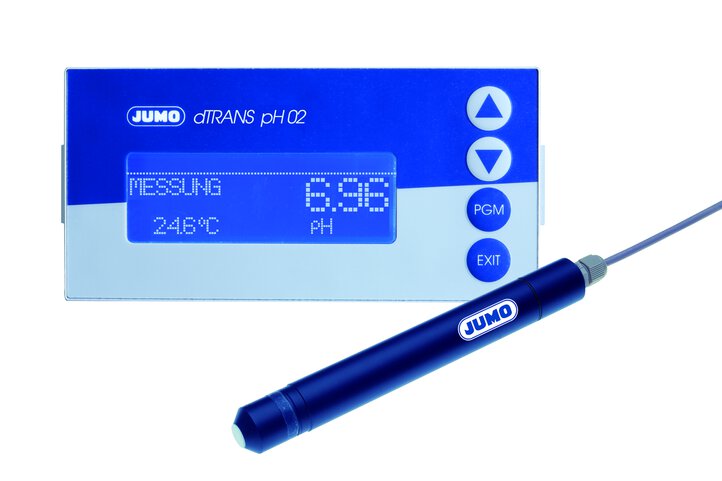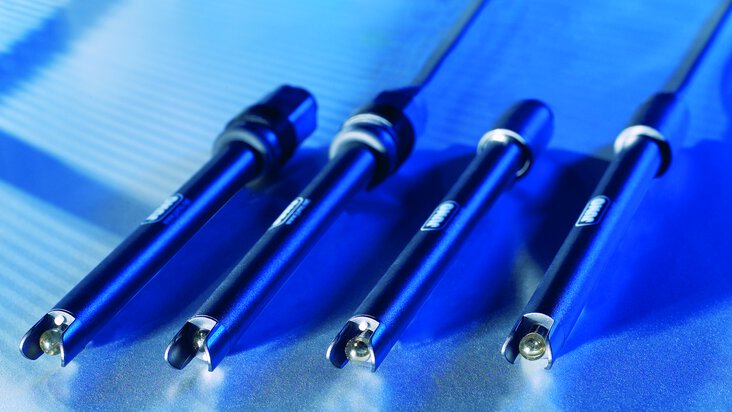

Ozone measurement in water – amperometric ozone sensors
In the following post, we discuss the use of ozone as a disinfectant and amperometric sensors for ozone measurement. Check it out and find the right measurement solution for your application!
Measure ozone in water treatment for safety
For hygienic reasons, drinking water or any other water with which people come into direct or indirect contact must be treated with compounds that destroy any micro-organisms in it.
Chlorine and ozone are very often used as disinfectants. In water-related applications, a high level of safety for the consumer is the most important requirement. For this reason, automation systems are used for fully automatic monitoring, control and recording of the disinfectant concentration.

Ozonation of the pool water reduces chlorine dosage, which is beneficial for people with sensitive skin
Ozone – one of the most powerful disinfectants
Ozone is one of the strongest oxidisers available. It reacts very quickly with contaminants in the water and thus renders them harmless. Ozone is not only used for disinfection, but also for:
-
oxidation of inorganic substances, including iron and sulphides
-
oxidation of organic pollutants, including substances changing the colour, smell or taste of water, as well as phenolic pollutants and pesticides
-
ozone treatment prior to chlorination: reducing the amount of chlorine needed and reducing the amount of substances which, in combination with chlorine, would form undesirable by-products
Ozone dosing
According to drinking water regulations, the safe concentration of ozone added to water is a maximum of 10 mg/l. The upper limit after water treatment is 0.05 mg/l.
Too high a concentration of ozone in the air causes drowsiness, headaches and fatigue and a drop in blood pressure.
Advantages and disadvantages of using ozone as a water treatment method
Advantages of ozone water disinfection
-
strong disinfectant (stronger than e.g. chlorine) – short reaction time
-
biocide lactivation is independent of pH
-
oxidation of organic substances (e.g. humic substances) improves the smell, taste and colour of the water
-
when ozone breaks down, only soluble oxygen ("non-residue") is produced
-
does not form halogenated by-products
Disadvantages of ozone water disinfection
-
high costs (plant, energy, etc.)
-
when air is used for O3 production, nitrogen oxides can be formed as undesired by-products (formation of organic nitrates).
-
formation of undesired by-products in water is possible: aldehydes, ketones, carboxylic acids, bromates and brominated organic compounds in the presence of bromide ions
-
due to its high reactivity, ozone breaks down relatively quickly – to prevent recontamination of the water or biofilm formation in the distribution system, a secondary disinfectant must be used
-
highly toxic and corrosive, posing a risk if released uncontrollably
-
ozone exposure could be danguerous and cause breath and throat irritation
How is ozone measured? Amperometric sensors for ozone monitoring
To measure the amount of ozone concentrations in water, it is advantageous if an electrical signal proportional to the disinfectant concentration is constantly available. This can be used as an input signal to the disinfectant dispenser, which means that the concentration can be controlled completely automatically.
Continuous and accurate measurement ozone present in water will be ensured by an amperometric ozone sensor with integrated temperature compensation.

The JUMO tecLine ClO2 and O3 chlorine dioxide and ozone probe is available in analogue and digital versions
Amperometric ozone meters – measuring principle
The substance to be determined (e.g. ozone gas) reacts at the working electrode (cathode). A current is then measured, which is proportional to the concentration of this substance in solution.
Sensor versions for measuring ozone levels in water
Amperometric ozone detectors can be divided into:
-
2-electrode systems
-
3-electrode systems with potentiostatic switching
Ozone sensors are available in both open and membrane-shielded versions.
PID controller JUMO AQUIS 500 AS – measurement data logging
The electronics built into the housing provides an uncalibrated 4 - 20 mA signal, which can be further processed by, for example, the PID controller JUMO AQUIS 500 AS with graphic LCD display. The device fulfils two functions: it provides the required supply voltage and enables simple calibration of the measurement system.

The transmitter, panel indicator and PID controller allows, among other things, the display of measurement data and simple calibration of the device
Ozone monitoring equipment – industrial applications
The amperometric ozone sensor can be used in the following areas:
-
drinking water
-
swimming pool water
-
process and production water
-
water used for industrial purposes
-
circulating systems such as cooling fluid circuits
-
water contaminated with surfactants and chemicals – only in the sensor version with a membrane insensitive to chemicals and tensides
- ${title}${badge}

